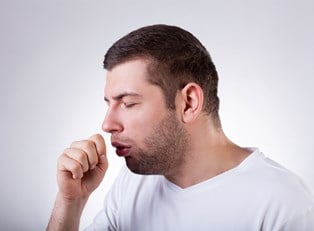Whooping Cough Treatment And Information
Whooping cough is also known as pertussis. It is an infection that occurs in the respiratory system. In the advanced stages of the illness, patients develop a severe and hacking cough. After a coughing bout, it is followed by a loud intake of breath. This intake of breath is where the name whooping cough came from. According to whooping cough information, it is a highly contagious infection. In fact, it was once the leading cause of childhood death from an illness in the United States. There is now a vaccine for the virus, so the number of annual deaths has dropped significantly. However, pertussis can also lead to other serious problems. For instance, it can develop into pneumonia. There has been a lot of research done in order to figure out whooping cough causes. Scientists have discovered that is caused by the bacterium Bordetella pertussis. This bacterium infects the pharynx, which is the top section of the throat. It causes inflammation, which narrows a person's breathing tubes. Due to the narrowing, patients have to gasp for air. When an infected person coughs or sneezes, tiny droplets of fluid are released into the air. As a result, the virus is easily spread from one person to another.
Whooping Cough Symptoms
The first signs of whooping cough are similar to that of a common cold. Patients will get a runny nose and a low-grade fever. Along with that, they will also start to sneeze and develop a mild cough. It usually takes seven to fourteen days for more severe whooping cough symptoms to occur. After a week or two, the symptoms develop into a dry and irritating cough. The infected person may have coughing spells that last for a minute or longer. During these spells, some children have been known to turn purple or red. Once the coughing is over, patients make whooping sounds. Some people also vomit when they are done coughing. It is not uncommon for patients to feel healthy between coughing spells. A lot of infants are not able to make the whooping noise. Therefore, their symptoms of whooping cough are slightly different from ones that older children get. They may go through periods of time where they are gasping for air. During this time, their face reddens. Some infants have also been known to stop breathing for a few seconds. If a person is experiencing any of these symptoms, it is imperative to seek help from a doctor.
Whooping Cough Treatment
If the virus is treated early enough, the symptoms will go away quicker. However, the majority of cases are diagnosed too late. This is common since whooping cough symptoms take one to two weeks to become more severe. One whooping cough treatment option is the use of antibiotics. Although the antibiotics will not cure the virus, they prevent secondary infections and speed healing. To be fully effective, they need to be taken before the virus worsens. However, they can still be used late because they reduce the patient's ability to spread the disease. Family members are commonly given antibiotics for preventive measures. In order to treat infants that have whooping cough, they need to be hospitalized. They will be under constant surveillance in the hospital since their breathing temporarily stops during long coughing spells. Another example of whooping cough treatments is intravenous fluids. Doctors will give patients fluid through a vein if their coughing spells prevent them from drinking enough liquids. Cough suppressants do not work. One of the best things to do is vaporize the room because it helps soothe irritated lungs. In some cases, doctors will prescribe sedatives to make young kids sleepy.



